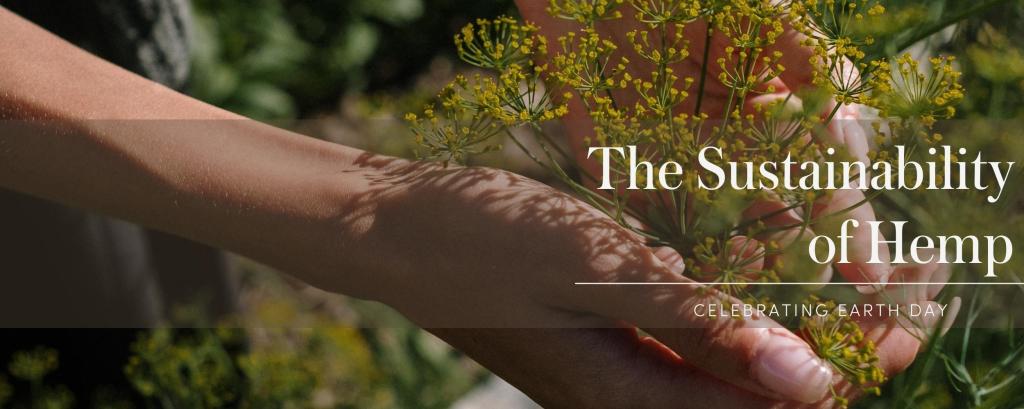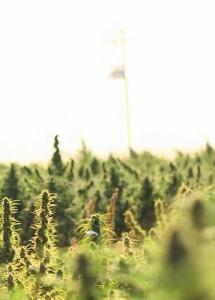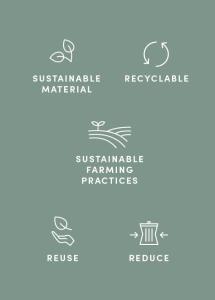Sustainability and Hemp

Sustainability and Hemp
By Cy Popplewell
Earth Day is here, bringing more than 1 billion people together as we take intentional steps to honor our amazing planet, build community as we protect existing natural resources, and shift to more sustainable solutions for the well-being of our future.
Over the last few years, the term “sustainability” has been tossed around more than ever. But the overall goal of sustainability has been around for decades, and the movement has grown even more rapidly in recent years. Due to the long history of unsustainable practices, our Earth, our clean natural resources, our wildlife, and our existence are all out of balance. And the future of our planet requires all of us coming together to make a difference.
Sustainability and Hemp: Is There a Connection?
In terms of sustainability, hemp has been at the forefront of environmentally friendly practices for many years across the globe, and throughout history as one of the most versatile and sustainable resources that protects rather than harms the planet! Today, we see hemp being used for agricultural purposes, in plant science therapy, in the creation of goods and materials, as a nutritious food source, and as a plastic replacement. Innovative, hemp-based technologies are gaining even more momentum in our collective commitment to protecting the Earth.
 Plant-Powered Sustainability: Did You Know?
Plant-Powered Sustainability: Did You Know?
- Did you know that hemp is composed of natural fibrous compounds that can be used in agriculture for purposes other than CBD? Hemp can actually be used to make many products such as clothing, paper, plastic, textiles, biodiesel, animal feed, and even housing materials! More widespread use of hemp means the option to cut down on waste-heavy and unsustainable material sources such as paper and plastics — especially as most hemp materials are biodegradable!
- Hemp uses less water, requires little to no pesticides, is drought-resistant, and requires little space to grow, all of which mean less unnecessary water waste and fewer harmful chemicals! Hemp is very resilient and helps to preserve other precious natural resources, making it a sustainable crop for the agricultural industry. This incredible plant offers much and requires very little in return, making it one of the top up-and-coming renewable resources.
- Hemp can help clean up the planet! One of the most amazing things about the hemp plant as a sustainable resource is its role as a “phytoremediator.” Phytoremediation is the process of using plants to remove contaminants such as heavy metals and radiation from soil, meaning hemp can actually remove toxins from the earth! Hemp is touted as the most eco-friendly and affordable method of removing these contaminants — even being used to clean up the nuclear site of Chernobyl!
- Hemp doesn’t only protect the soil, it actually can make it healthier through diversity. Hemp crops give back by returning nutrients to the soil and sequestering carbon dioxide. This, combined with its ability to increase crop rotation, equals higher soil biodiversity. You can think of this like gut health for the soil — healthy soil depends on a vibrant range of biodiversity, much like a wide array of microbes in our gut makes our microbiome more capable and resilient. Hemp recirculates nutrients back into the earth so the microbiome is happier and healthier, which then gives back to the plants and ecosystem with much less strain on the environment.
- Hemp’s short life cycle means that it grows faster than other crops, so it is much more renewable than many other natural resources. Let’s think about paper — the hemp plant grows over a four- to five- month growing season, compared to trees, which take 20-80 years to grow sufficiently to use for paper making. An estimated acre of hemp can produce as much paper as four to ten acres of trees over a 20-year lifespan. Aside from producing more paper over the same timeframe, hemp doesn’t require the destruction of long-growth rainforests and habitats, for a truly environmentally friendly solution.
- Ever heard of biomass? Hemp biomass is a term that refers to the parts of the plant that are non-flowering and typically not used for cultivation: the seeds, stalks, and leaves. Beyond the therapeutic flower being used for our CBD oil, the remaining biomass can then be repurposed for a variety of products. Every part of the hemp plant serves a purpose, which means zero waste!
How is Equilibria Doing Our Part?
Here at Equilibria, we are committed to making a positive impact on not only the lives of our members with our quality CBD oil and personalized wellness support, but on the world we all share together. Sustainability is actually at the core of our mission. We source all of our hemp from our partner farm outside of Boulder, CO. Our strategy for growing and harvesting hemp at our farm aligns with our dedication to providing some of the highest quality CBD on the market. Our farm employs high-impact sustainability practices, including organic farming, growing our hemp outdoors, hand harvesting the flower, and a single custody source and supply chain.
Beyond delivering premium, organic, full-spectrum CBD, we understand that investing in hemp IS investing in the sustainability movement. And the more we can share the transformational impact of CBD in the lives of women, the more momentum and awareness we can also spread around the power and expansive uses for this incredible plant! Stay tuned for more of Equilibria’s dedication, innovation, and education towards environmentally friendly approaches and adaptations.
How Can We Each Do Our Part?
 Curious about how we can live more sustainably? In addition to joining our CBD community, here are some other ways that we can make an impact towards a more sustainable future:
Curious about how we can live more sustainably? In addition to joining our CBD community, here are some other ways that we can make an impact towards a more sustainable future:
- Know that, especially starting out, sustainability doesn’t have to be all-or-nothing. Often, people only picture sustainability as an all-in or sometimes extreme lifestyle — where we move into tiny homes, grow and preserve all of our food, and hand wash laundry on a washboard. Don’t get trapped into thinking this is the only way to join in on the green movement! Everyday sustainability activism looks like consistently making even a few small choices that fit into your lifestyle — finding balance adds up over time for a powerful impact!
- Celebrate Earth Day through intention and action! Visit https://www.earthday.org/ to learn more, and find ways to get involved, whether at home or sharing in community with others; make a new tradition with friends or family each Earth Day!
- Get curious about the role we each play, and where we all have opportunities to change. Learn more about your ecological footprint (measurement of the demand put on the earth’s ecological capacity), with this ecological footprint calculator. This calculator highlights some of the key areas of environmental impact for the globe, and can help us reflect on where we can get started.
- Consider starting to explore even one key sustainability area and come up with a few small changes you can make. Starting in one area helps to focus in and make slow, steady adjustments rather than trying to take everything on at once! For example, when it comes to electricity: Be consistent about turning lights off or unplugging appliances when not in use.
- Use timer systems or devices to conserve energy based on your schedule.
- Obtain an energy report from your electric company to highlight when and where you are using the most energy.
- Integrate a screen-time detox for your own well-being by setting an electronics curfew each night — no screens after 9 p.m.!
- Know that we are all in this together. Remember, these are global problems that we all contribute to, so the responsibility isn’t all on one person to carry; rather we all play the same role to make a difference! When we come together as a collective, our combined focus, support, and synergy can truly change the world, one individual at a time.
